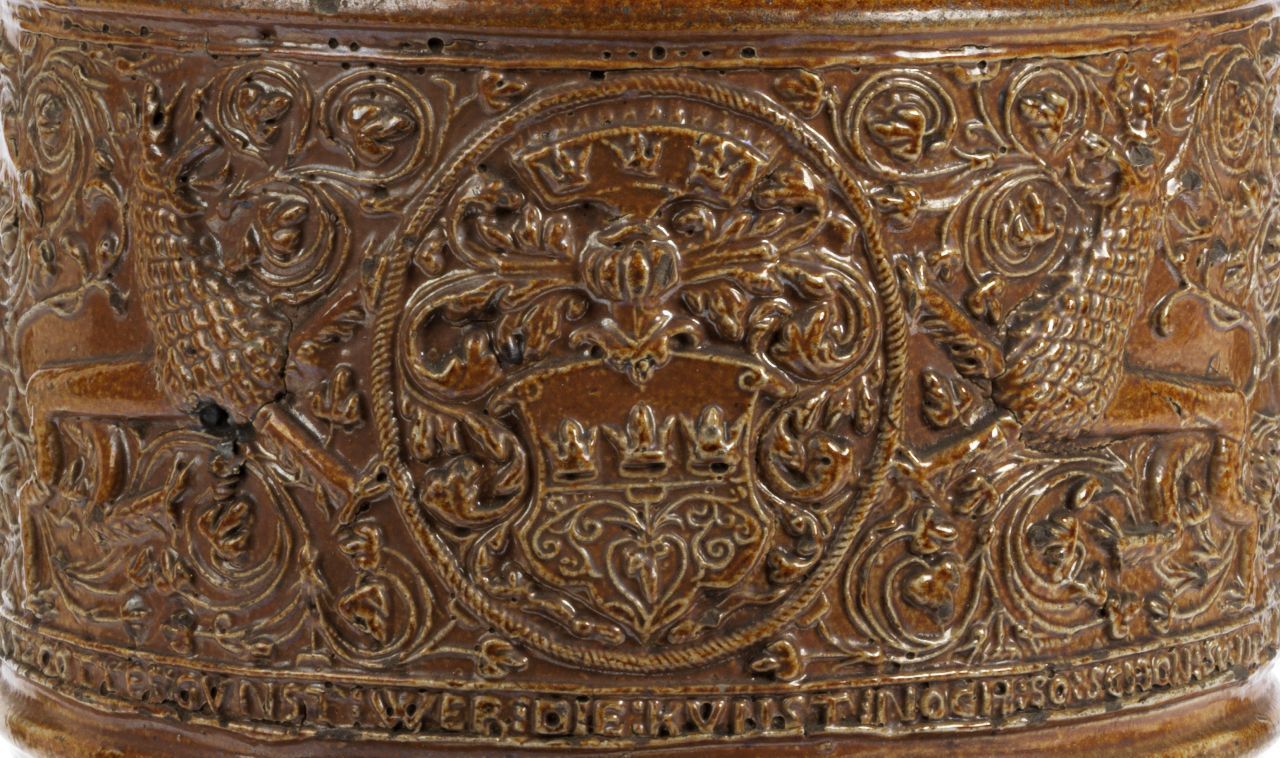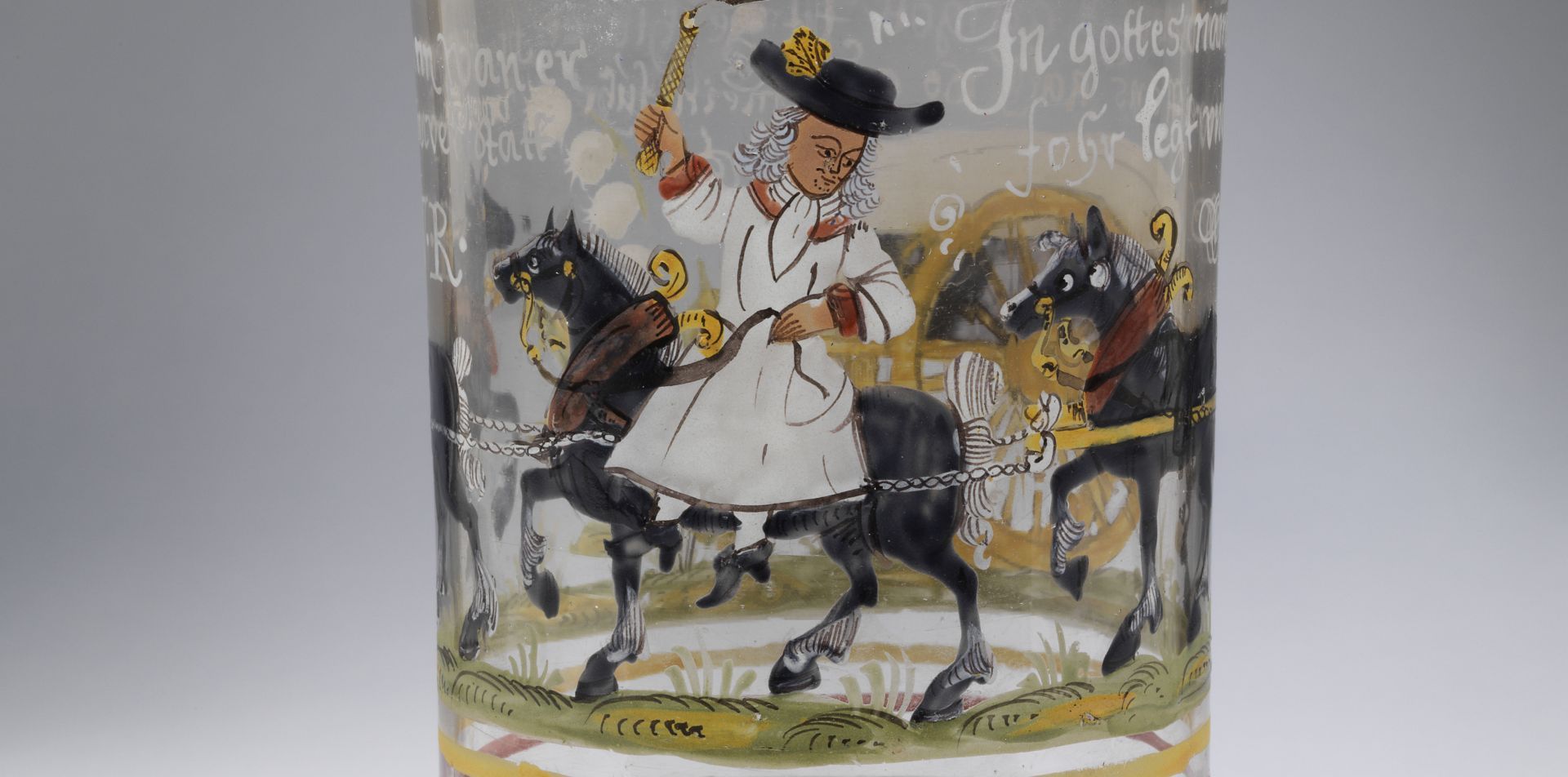17th Century Dippoldiswalde Stoneware

Dippoldiswalde (formerly Annaberg) pear-shaped Jug ca.1680
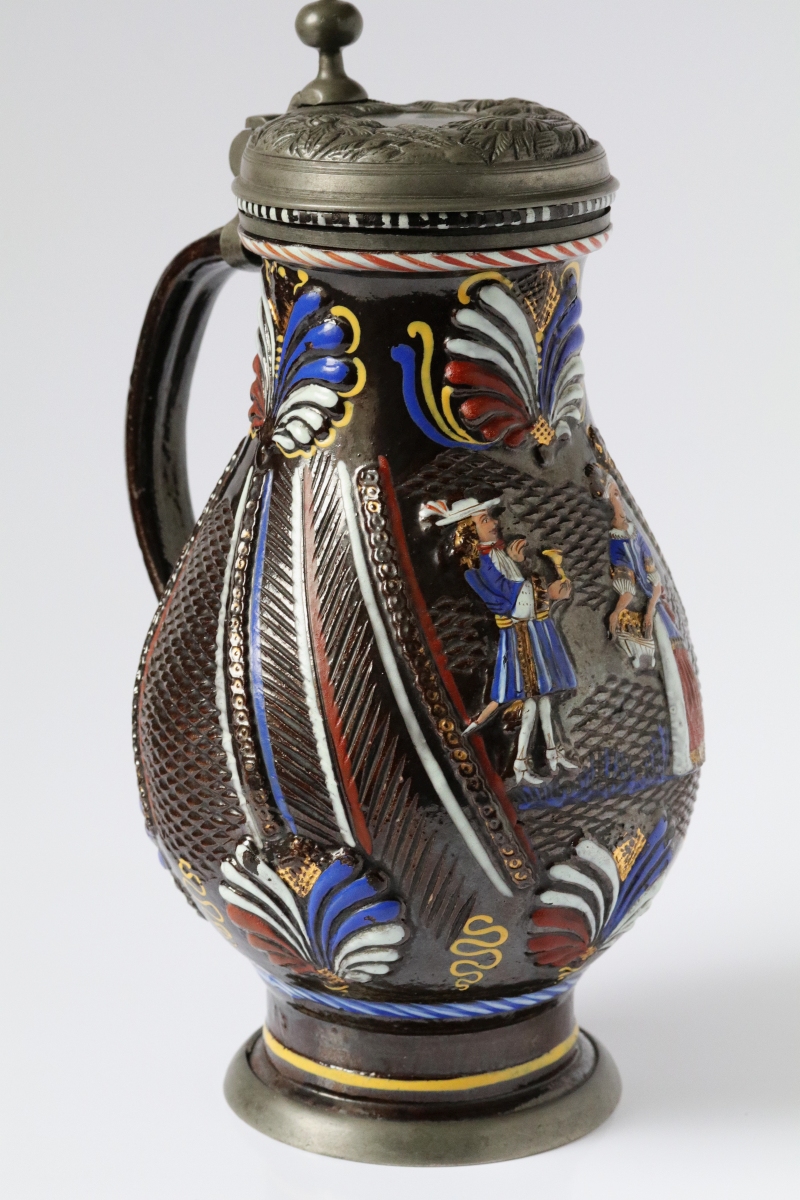
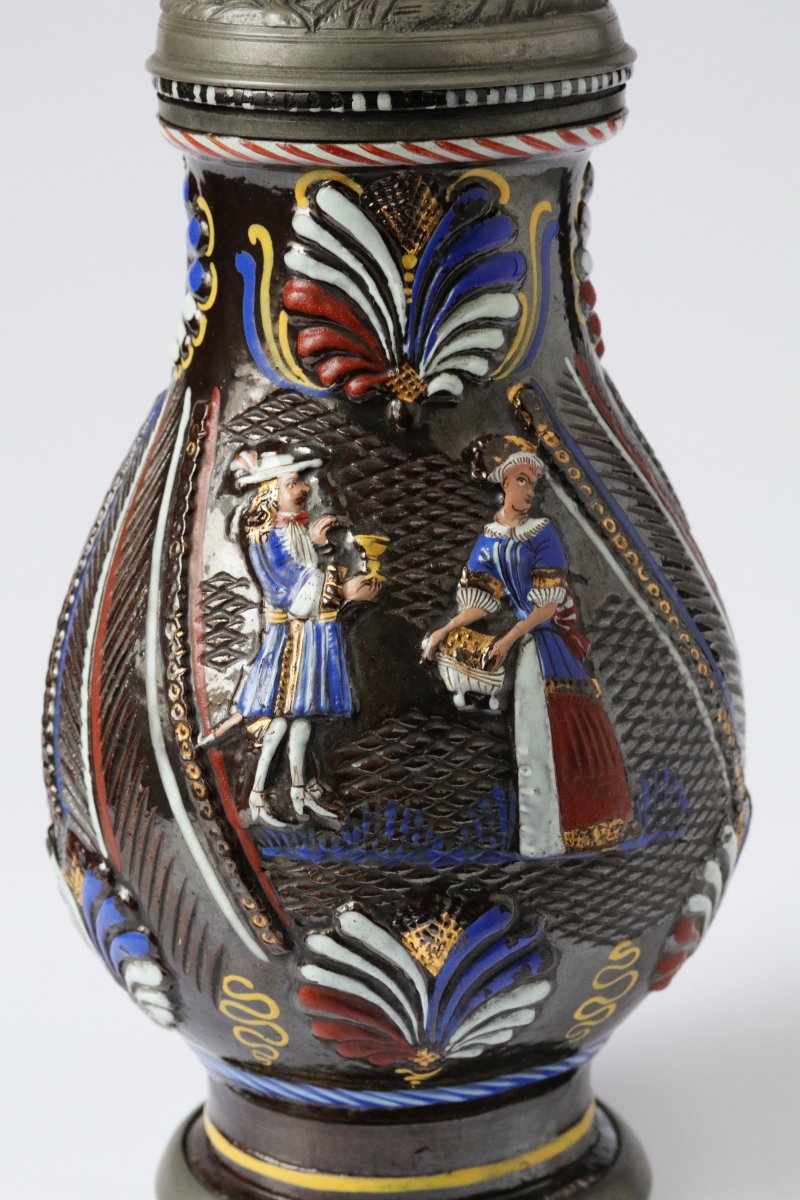
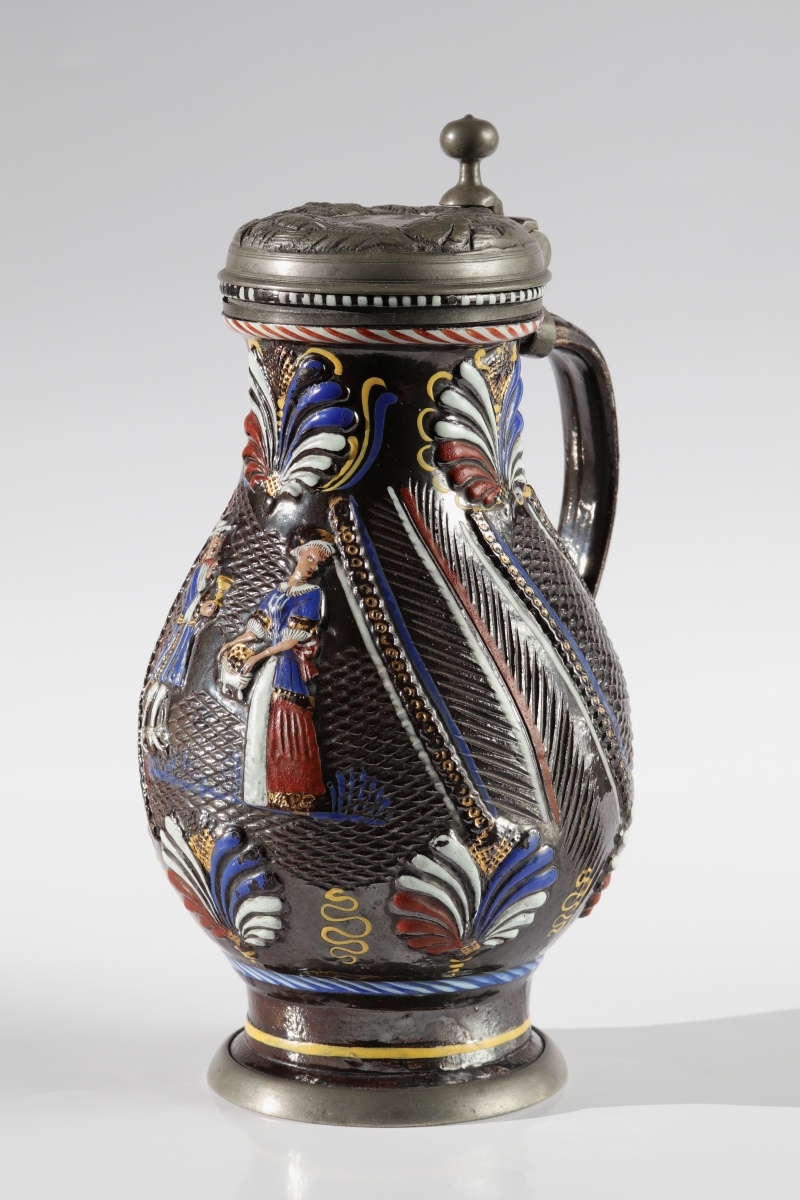
Attribution: Annaberg | Dippoldiswalde
Speculations on attributions of Dippoldiswalde stoneware since the middle of 19th century have been manifold. Ranging from mere speculations to serious research based on pewter marks and coat of arms to determin a place or origin. At the middle of 20th century Annaberg was most probable as the location of the productions of these ceramic objects. A very good description of the development of the attribution of Dippoldiswalde stoneware since the middle of the 19th century can be obtained by the standard reference Horschik Steinzeug p 217 ff (Horschik, Josef. Steinzeug: 15.-19. Jh.; von Bürgel bis Muskau. Ebeling, 1981.) So I do not want to go into this any further, as these longstanding discussions came to an end at the turn of the century with excavations that have been taking place in the Dippoldiswalde area and produced finds of “Annaberg type” molds and fragments. As a result the state of research as of today is that Dippoldiswalde is the origin of these stoneware objects formerly attributed to Annaberg.Characteristics of Dippoldiswalde
The heyday of craftsmanship of Dippoldiswalde Stoneware was the second half of the 17th century.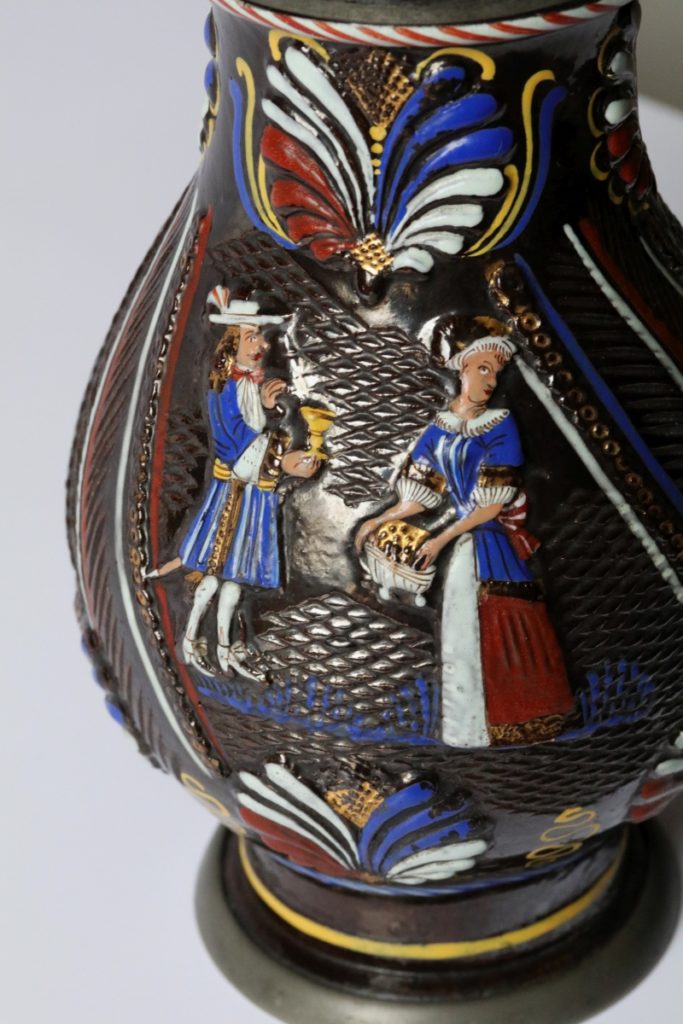
Repertoire of Motifs
The potters had a substantial stock of moulds at their possession to decorate the central relief. Very popular were Elector and Electress mainly as half bust or hunting scenes. As follows a more or less complete overview by Josef Horschik.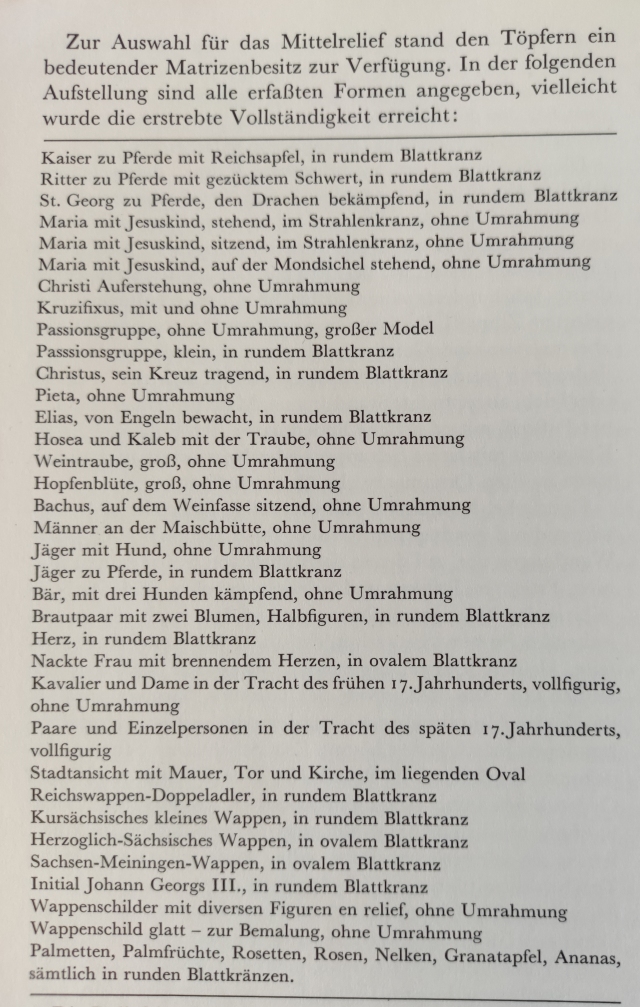
Table of moulds for the central relief:
Topics were religious (e.g. Christ or Mary with Child Jesus) secular (e.g. Emperor or Elector), hunting scenes, coat of arms, brewing and viticulture, marriage and chivalrous couples
Josef Horschik, Steinzeug: 15. bis 19. Jahrhundert; von Bűrgel bis Muskau, 1978 p 230.Museum Reference Victoria & Albert Museum, London
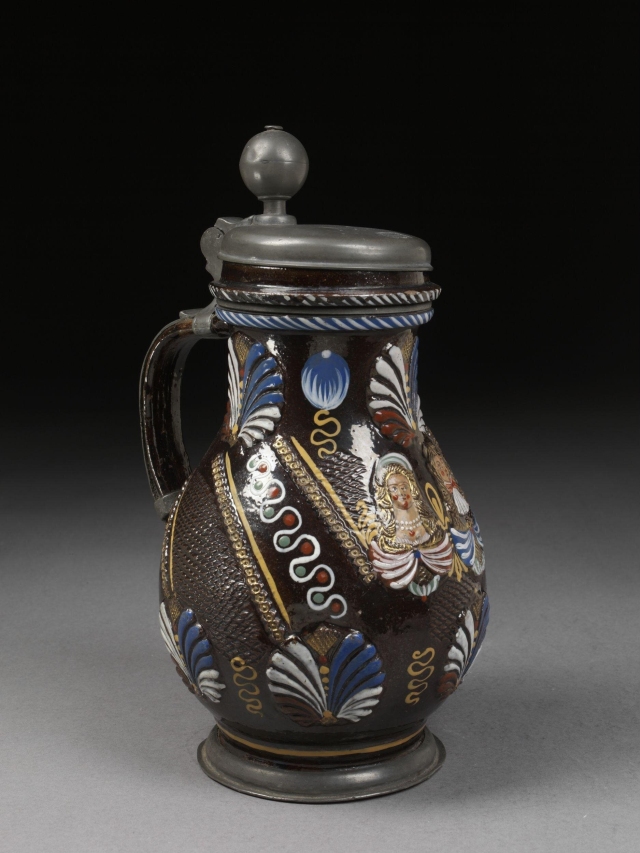
Tankard Made in Annaberg, Germany about 1680-1700 Stoneware with relief decoration painted in enamels, pewter mount C.301-1921 Given by Mr C.H. Campbell (16/07/2008)
©Victoria & Albert Museum, London https://collections.vam.ac.uk/item/O162294/tankard-unknown/
Reference Objects – Peter Vogt Munich
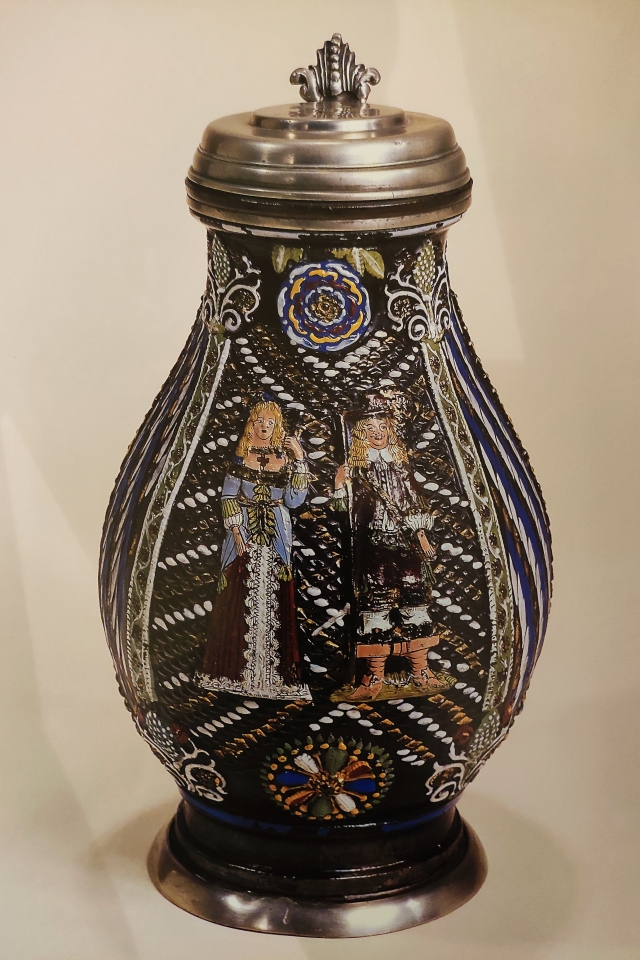
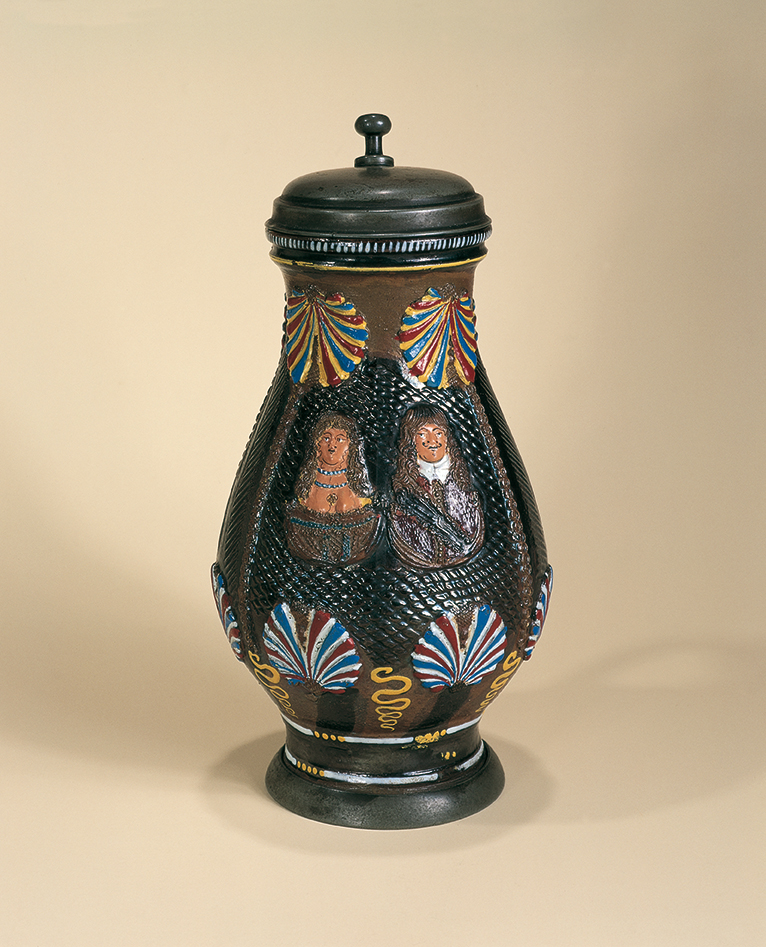
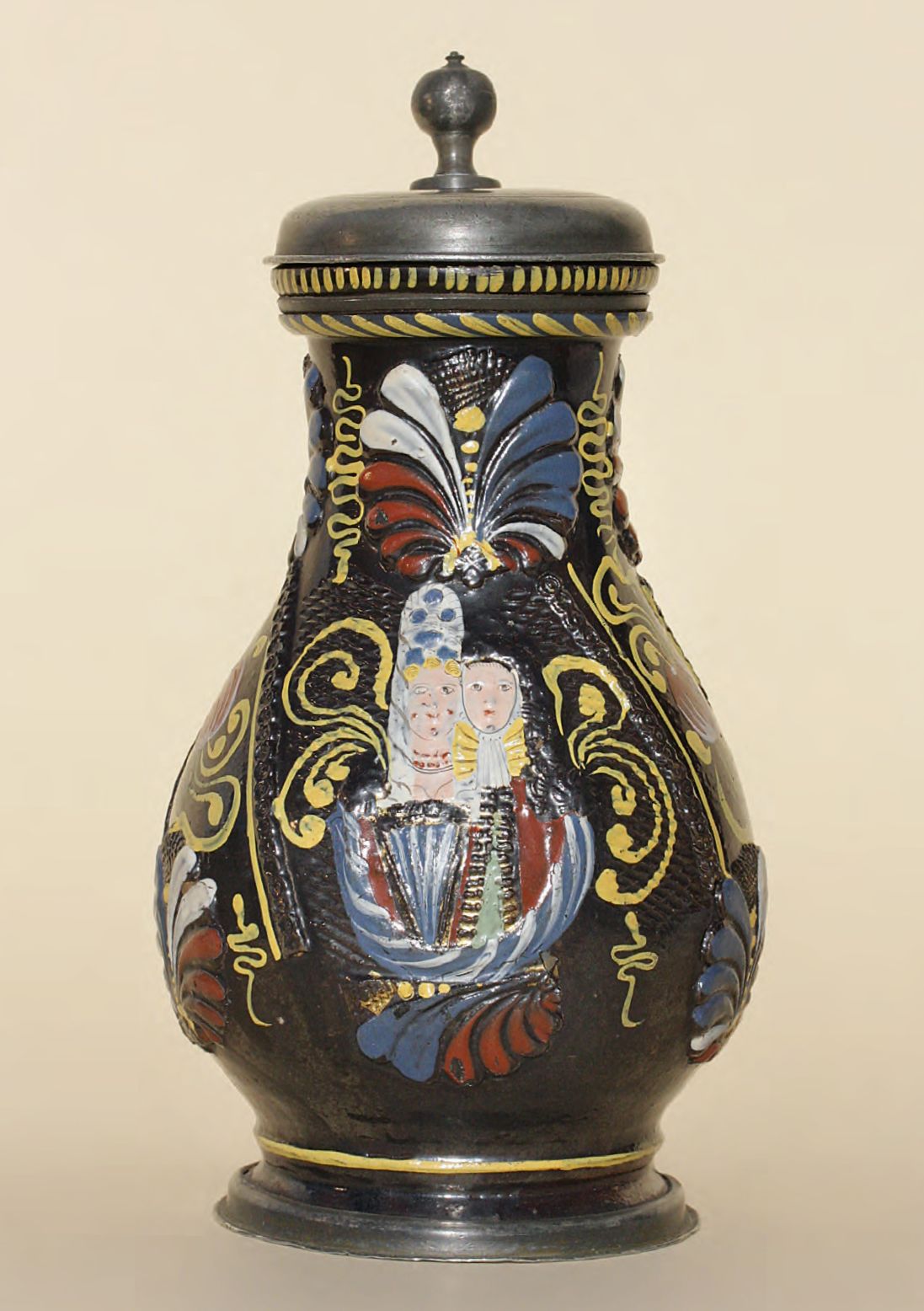
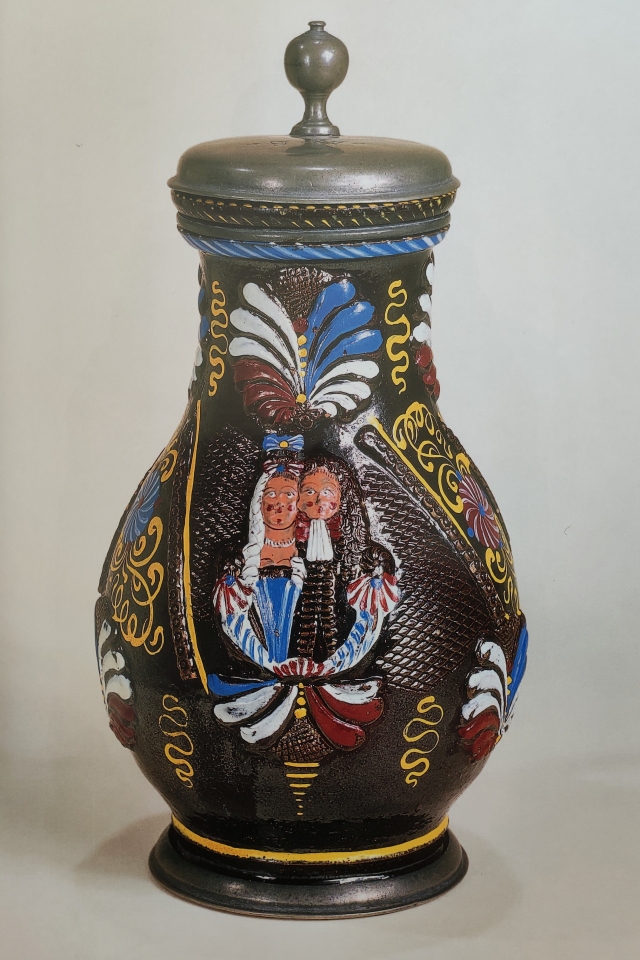
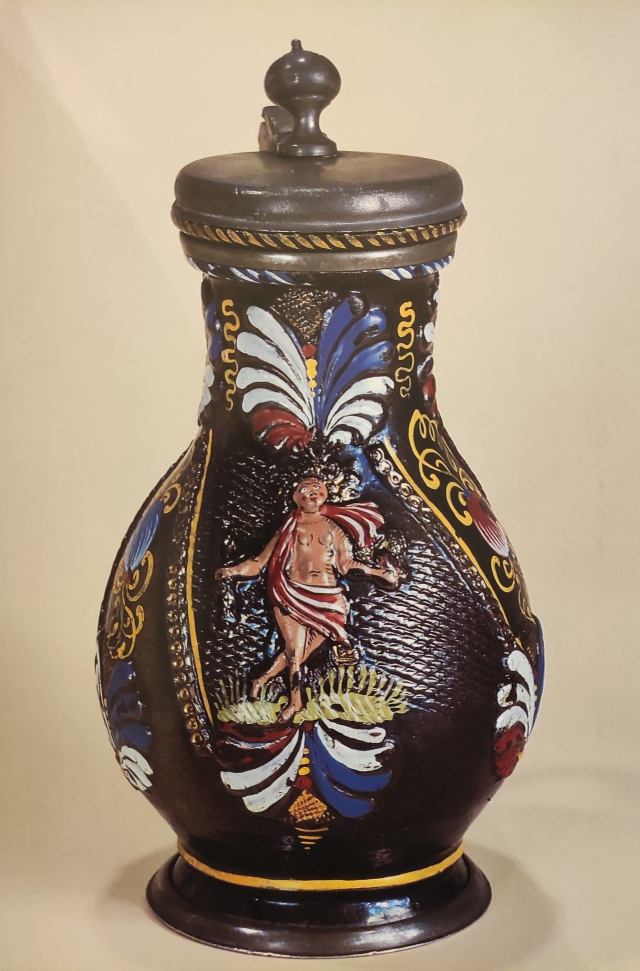

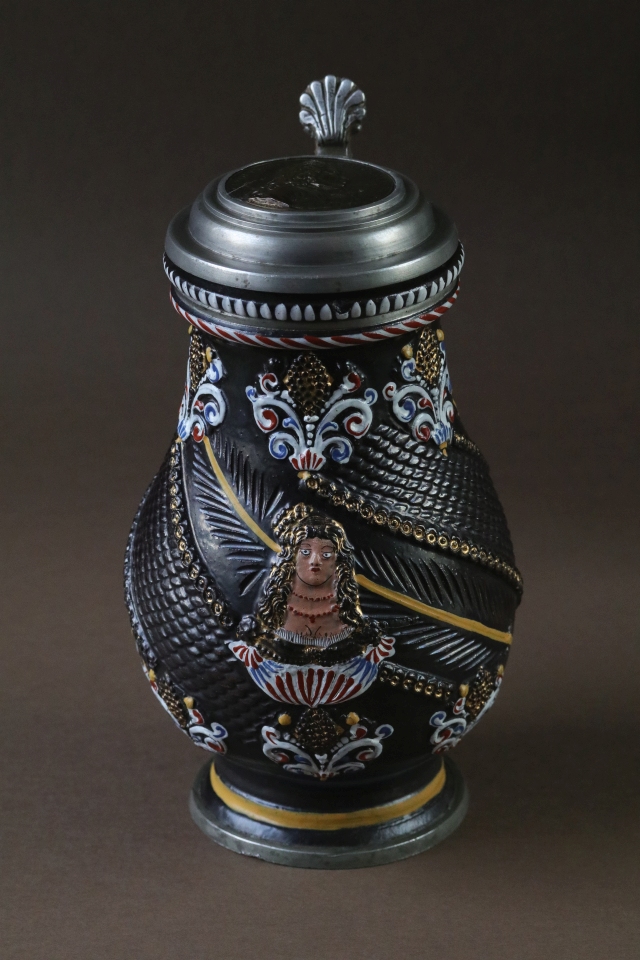
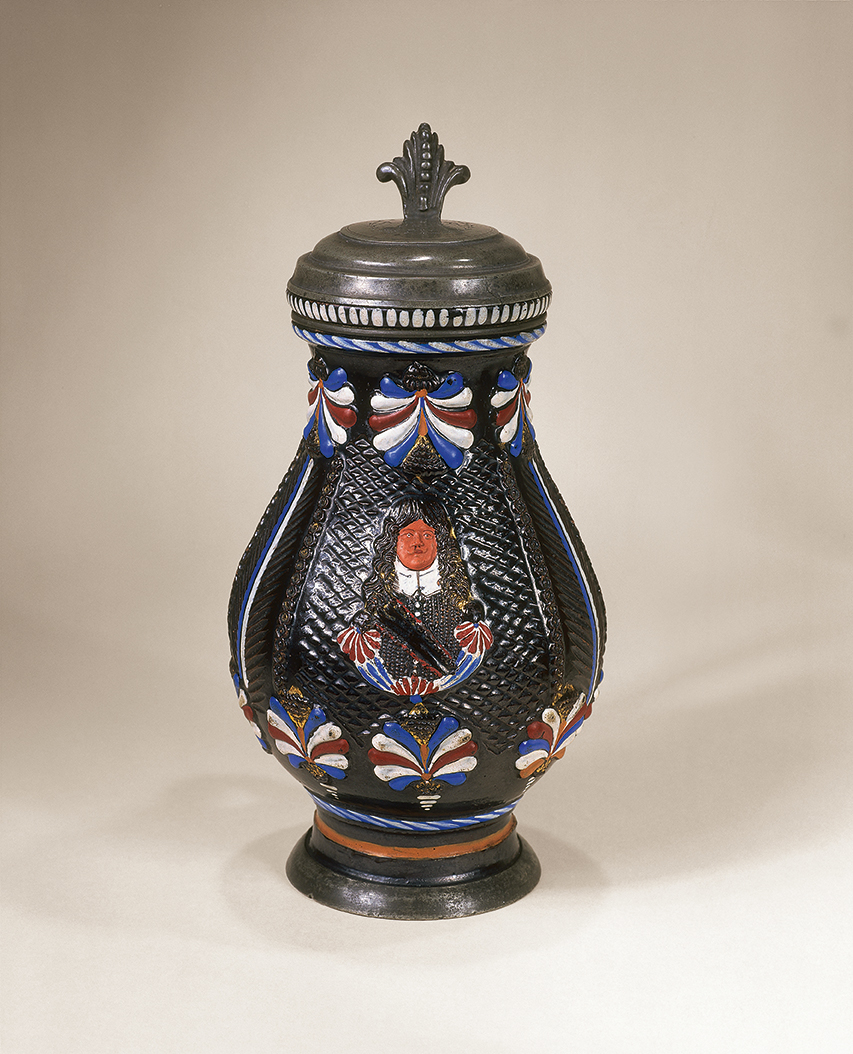
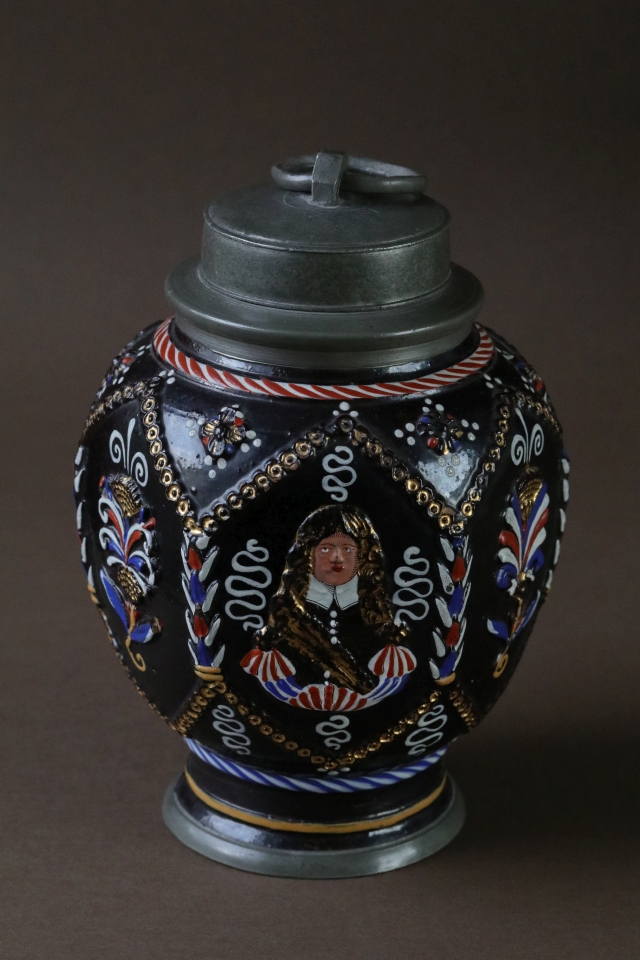
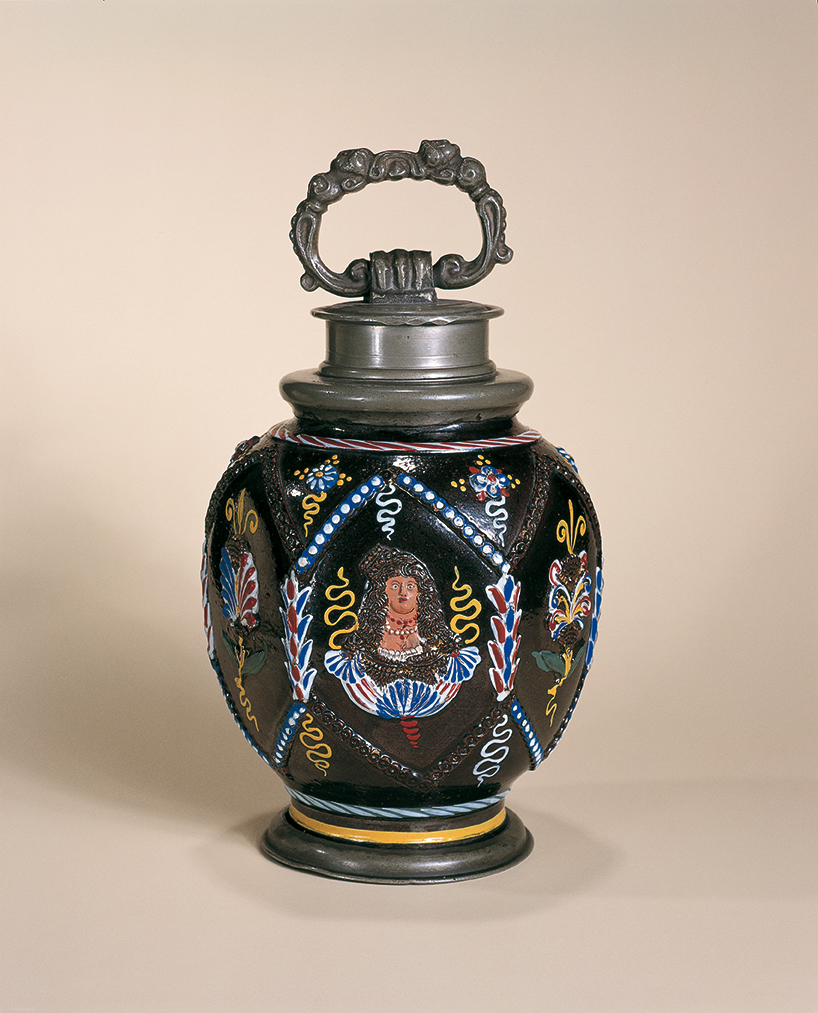

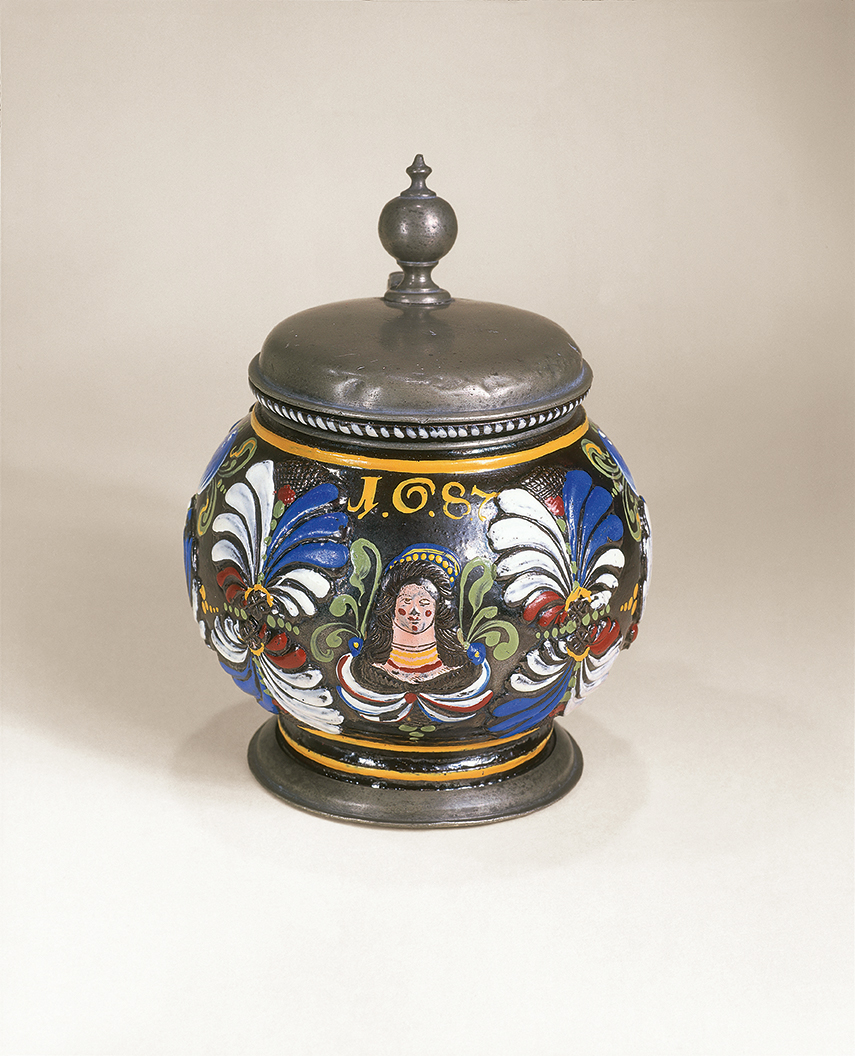
Literature
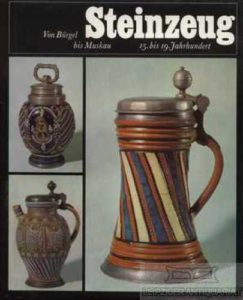
Josef Horschik, Steinzeug: 15. bis 19. Jahrhundert; von Bűrgel bis Muskau, 1978 Seiten 217 ff.
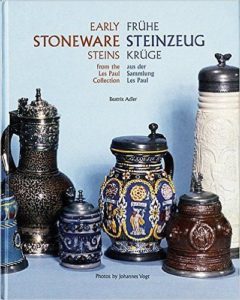
Adler, B. (2005). Early stoneware steins from the Les Paul Collection: A survey of all German stoneware centers from 1500 to 1850. Beatrix Adler.
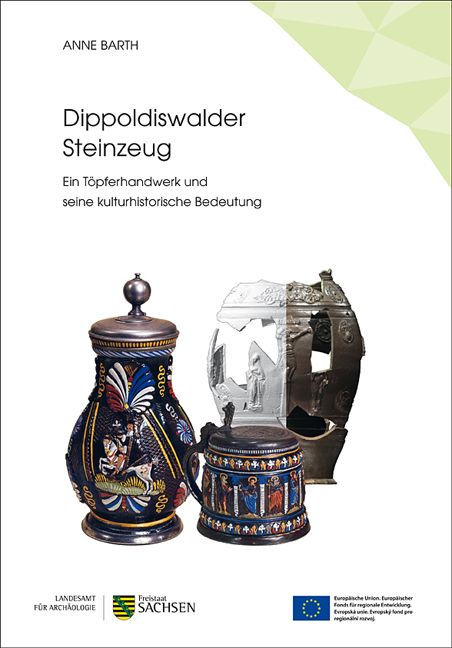
“Anne Barth: Dippoldiswalder Steinzeug. Ein Töpferhandwerk und seine kulturhistorische Bedeutung.” 2018 Landesamt für Archäologie Sachsen (Verlag).
https://journals.ub.uni-heidelberg.de/index.php/mitt-dgamn/article/view/77935
